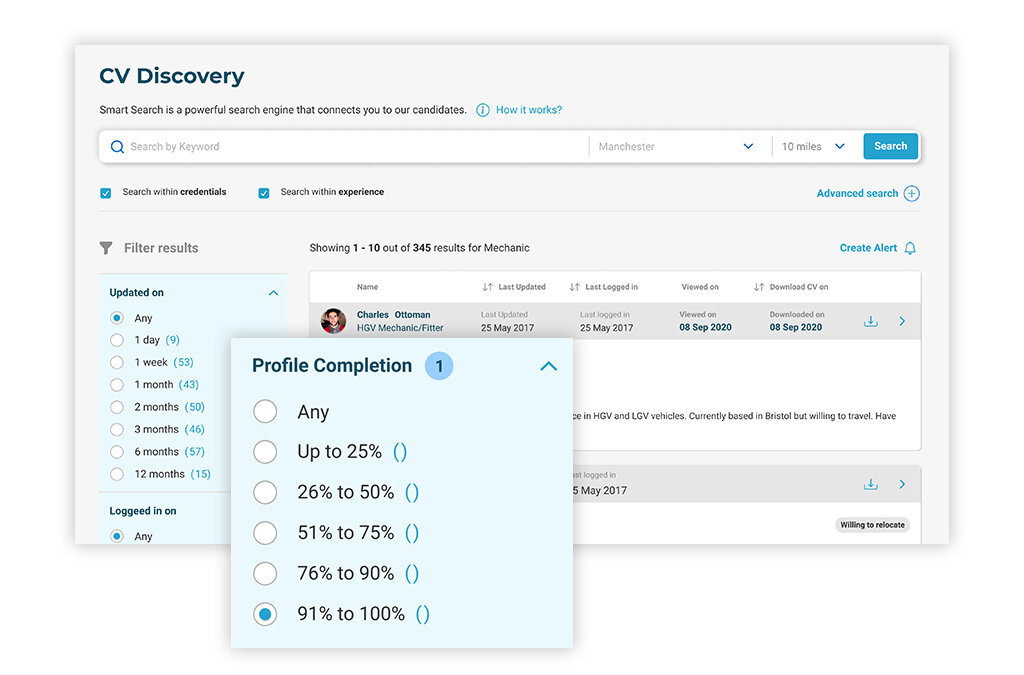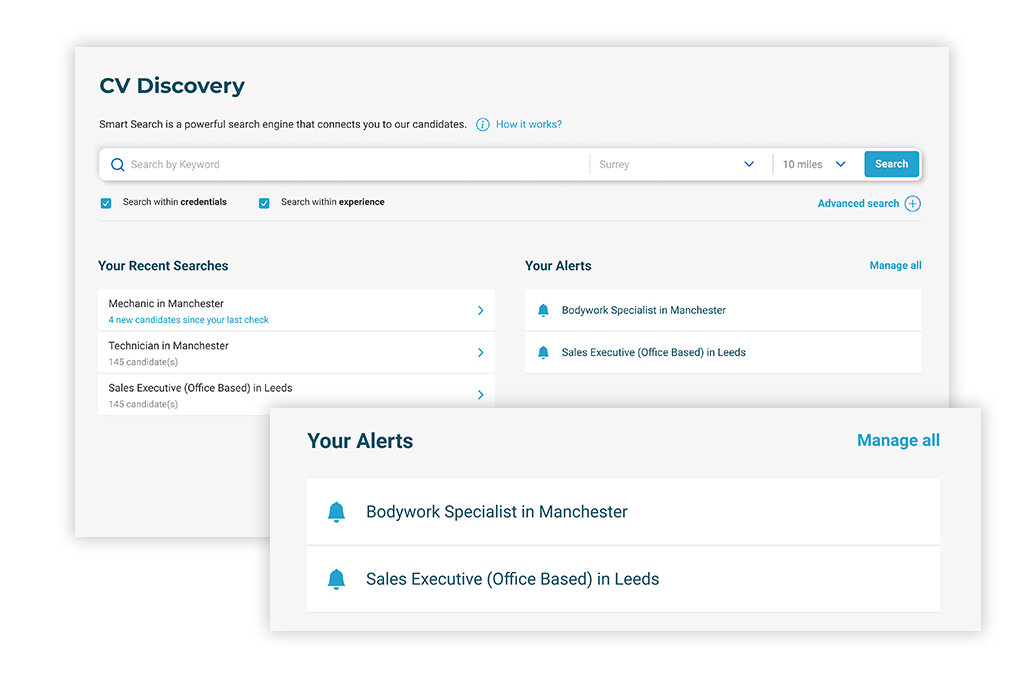What is the candidate journey?
The candidate journey is how a jobseeker will experience a job search and the following recruitment process within a company. These interactions can happen both on and offline.
The candidate journey can be broken down into 5 simple steps. Below are some things to consider which can affect the candidate journey, either positively or negatively.
Awareness and Consideration
Do jobseekers know about your business? What is your employer reputation in the media? What do employees say about you on Glassdoor?
Application
Do you always respond to jobseekers? How long do you take to make contact with successful applicants?
Screening
What information do you provide on your website to help applicants through the screening process? Did you advise the applicant what happens next? Have you advised the candidate on expected time scales?
Interview
Have you provided the candidate with enough information about the interview process? Did you allocate enough time for the candidate to prepare? Was the interviewer friendly and approachable?
Hire or Reject
Have you provided adequate information about the onboarding process? Do you stay in touch with candidates if there is a time lag between the interview and their start date? Do you provide constructive advice as to why applicants aren’t successful? Have you left the door open to discuss future career opportunities?
Why does the candidate journey matter?
Nearly 60% of jobseekers on InAutomotive have experienced a negative candidate journey, and it’s often down to a lack of thought applied to each of the touchpoints. Every time you connect with a candidate, you have an opportunity to build your relationship and nurture their opinion of you as an employer.
In this short guide, we’re focusing on how to reject candidates graciously. Unfortunately, rejection is part and parcel of the recruitment process but if handled well, you can leverage it to your advantage. Rejected candidates can become advocates for your company if things end on a positive note.
How should I reject candidates?
- At any stage, you should be replying to rejected applicants to advise their application won’t be taken any further. This includes if they don’t make it to screening. On InAutomotive, templates are provided for you so there’s no excuse really.
- Don’t delay in turning applicants down. If you have made your decision, put the applicant out of their misery and stop them wondering.
- Being the bearer of bad news is one of the least appealing aspects of being a recruiter but if a candidate has taken the time to apply, it is only courteous to give a response and let the jobseeker know where they stand. It’s worse for them than it is for you.
- Asking the candidate if you can reach out with future career opportunities is a chance to build your talent pool and it will soften the rejection for the candidate. However, don’t give false hope. If you have no intention of speaking with them again, don’t say it.
- Advise candidates to stay in touch over social media, invite them to events or add them to your newsletters (if they consent of course) to keep them engaged following the rejection.
- Thank jobseekers for taking the time to apply or attend interviews. Scheduling, prepping and interviewing requires a lot of energy and hard work so it is only polite to acknowledge their time.
- If a candidate has reached the interview stage, a phone call is much better than an email if you decide to reject them. Emails can often be cold and impersonal, particularly if you have already met with them face to face.
- Providing a brief but honest explanation as to why you won’t be taking their application any further will help the candidate immensely in future interviews. For example, “Although we were impressed with your can do attitude, we felt that you were lacking in X skills.”
- Be tactful though, you don’t want to sound discriminatory. It’s also important to be constructive. How will your feedback help them?
- You could also offer some guidance on where they did perform well in the interview to cushion the blow. For example, “We were extremely impressed with your X achievements but on this occasion, we won’t be moving forward with your application.”
- Ask for feedback – recruiting is a two-way street! Asking your candidates for feedback shows that you care about their opinion and respect what they have to say. The feedback will help you structure your recruitment process to the best it can be.
- If a candidate made it to the interview stage, the chances are, they did something well to make it that far. Perhaps they were lacking in one or two small areas which could be developed in time. If bridges are burned through a poor candidate journey, it’s likely they won’t come back when you do have an opportunity which they could excel in.
What should I do next?
- Map out all the touchpoints a jobseeker could have in their journey with you. Identify the areas where you could perform better. Don’t be afraid to implement new ideas into your current strategy.
- Ask your current employees to be honest about their candidate journey and how it could have been improved.
- Similarly, ask rejected applicants to rate their candidate journey experience with you.
- Assign tasks to your team on the changes you will make.
- Set achievable goals. For example, if rejected candidates give you a 5/10 rating now, aim to improve that rating to 7/10 within 12 months time.

Tailored Cv Searches With Filters
In our latest guide, we’ll be showing you around the new filters that we’ve implemented within CV Discovery, and demonstrate how you can use these to perform ultra-specific, granular searches that can help you quickly and efficiently find the candidates who meet your...

Improve Recruitment Decisions With Our New Candidate Profiles
In this guide, we’ll be taking you through one of the most significant new features of our new and improved site: the candidate profile. Why we introduced candidate profiles The candidate profile is an alternative to the traditional CV where automotive...

Top time-saving tips when using CV Discovery
In our latest guide to the new and updated features of your recruiter account, we’ll be taking a look at CV Discovery and providing some tips on how to save time during your search. Recent Searches When you access CV Discovery, you’ll see the search bar as...



